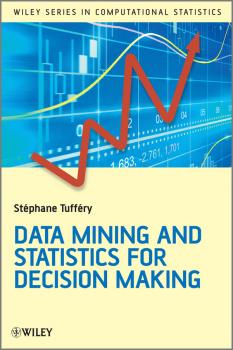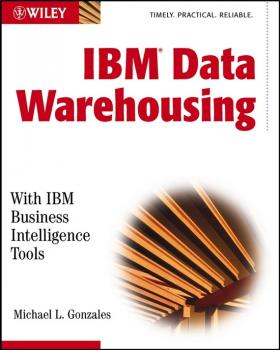Базы данных
Различные книги в жанре Базы данныхBIG DATA. Вся технология в одной книге
Как жить в мире, где информацию о тебе может получить кто угодно и когда угодно? Ведущий мировой эксперт по будущему Big Data Андреас Вайгенд знает ответ. Он разрабатывал стратегию данных таких крупных рыб, как Alibaba, Goldman Sachs, Lufthansa, Thomson Reuters. Работал руководителем по Big Data в компании Amazon, является Директором компании Social Data Lab, преподаёт в IT-школе Калифорнийского университета Беркли. Андреас уверен, что этот «дом со стеклянными стенами» несет в себе не только большие риски, но и потрясающие возможности как для корпораций, так и для обычных людей. Из книги Вы узнаете, как с помощью Big Data инновационные компании: [ul]следят за поведением пользователей; определяют круг интересов человека; формируют мнение потребителей.[/ul]
Data Mining. Concepts, Models, Methods, and Algorithms
This book reviews state-of-the-art methodologies and techniques for analyzing enormous quantities of raw data in high-dimensional data spaces, to extract new information for decision making. The goal of this book is to provide a single introductory source, organized in a systematic way, in which we could direct the readers in analysis of large data sets, through the explanation of basic concepts, models and methodologies developed in recent decades. If you are an instructor or professor and would like to obtain instructor’s materials, please visit http://booksupport.wiley.com If you are an instructor or professor and would like to obtain a solutions manual, please send an email to: [email protected]
Data Mining for Genomics and Proteomics. Analysis of Gene and Protein Expression Data
Data Mining for Genomics and Proteomics uses pragmatic examples and a complete case study to demonstrate step-by-step how biomedical studies can be used to maximize the chance of extracting new and useful biomedical knowledge from data. It is an excellent resource for students and professionals involved with gene or protein expression data in a variety of settings.
Язык PL/SQL
В учебно-методическом пособии рассматриваются основы языка программирования PL/SQL, реализованного в системе управления базами данных Oracle Database Server. Приводятся сведения о поддерживаемых типах данных, структуре программ PL/SQL и выполнении SQL-предложений в них. Отдельно рассмотрено создание хранимых в базах данных Oracle программ PL/SQL – процедур, функций, пакетов и триггеров.
Enterprise Data Governance. Reference and Master Data Management Semantic Modeling
In an increasingly digital economy, mastering the quality of data is an increasingly vital yet still, in most organizations, a considerable task. The necessity of better governance and reinforcement of international rules and regulatory or oversight structures (Sarbanes Oxley, Basel II, Solvency II, IAS-IFRS, etc.) imposes on enterprises the need for greater transparency and better traceability of their data. All the stakeholders in a company have a role to play and great benefit to derive from the overall goals here, but will invariably turn towards their IT department in search of the answers. However, the majority of IT systems that have been developed within businesses are overly complex, badly adapted, and in many cases obsolete; these systems have often become a source of data or process fragility for the business. It is in this context that the management of ‘reference and master data’ or Master Data Management (MDM) and semantic modeling can intervene in order to straighten out the management of data in a forward-looking and sustainable manner. This book shows how company executives and IT managers can take these new challenges, as well as the advantages of using reference and master data management, into account in answering questions such as: Which data governance functions are available? How can IT be better aligned with business regulations? What is the return on investment? How can we assess intangible IT assets and data? What are the principles of semantic modeling? What is the MDM technical architecture? In these ways they will be better able to deliver on their responsibilities to their organizations, and position them for growth and robust data management and integrity in the future.
Data Warehousing Fundamentals for IT Professionals
Cutting-edge content and guidance from a data warehousing expert—now expanded to reflect field trends Data warehousing has revolutionized the way businesses in a wide variety of industries perform analysis and make strategic decisions. Since the first edition of Data Warehousing Fundamentals, numerous enterprises have implemented data warehouse systems and reaped enormous benefits. Many more are in the process of doing so. Now, this new, revised edition covers the essential fundamentals of data warehousing and business intelligence as well as significant recent trends in the field. The author provides an enhanced, comprehensive overview of data warehousing together with in-depth explanations of critical issues in planning, design, deployment, and ongoing maintenance. IT professionals eager to get into the field will gain a clear understanding of techniques for data extraction from source systems, data cleansing, data transformations, data warehouse architecture and infrastructure, and the various methods for information delivery. This practical Second Edition highlights the areas of data warehousing and business intelligence where high-impact technological progress has been made. Discussions on developments include data marts, real-time information delivery, data visualization, requirements gathering methods, multi-tier architecture, OLAP applications, Web clickstream analysis, data warehouse appliances, and data mining techniques. The book also contains review questions and exercises for each chapter, appropriate for self-study or classroom work, industry examples of real-world situations, and several appendices with valuable information. Specifically written for professionals responsible for designing, implementing, or maintaining data warehousing systems, Data Warehousing Fundamentals presents agile, thorough, and systematic development principles for the IT professional and anyone working or researching in information management.
Data Mining and Statistics for Decision Making
Data mining is the process of automatically searching large volumes of data for models and patterns using computational techniques from statistics, machine learning and information theory; it is the ideal tool for such an extraction of knowledge. Data mining is usually associated with a business or an organization's need to identify trends and profiles, allowing, for example, retailers to discover patterns on which to base marketing objectives. This book looks at both classical and recent techniques of data mining, such as clustering, discriminant analysis, logistic regression, generalized linear models, regularized regression, PLS regression, decision trees, neural networks, support vector machines, Vapnik theory, naive Bayesian classifier, ensemble learning and detection of association rules. They are discussed along with illustrative examples throughout the book to explain the theory of these methods, as well as their strengths and limitations. Key Features: Presents a comprehensive introduction to all techniques used in data mining and statistical learning, from classical to latest techniques. Starts from basic principles up to advanced concepts. Includes many step-by-step examples with the main software (R, SAS, IBM SPSS) as well as a thorough discussion and comparison of those software. Gives practical tips for data mining implementation to solve real world problems. Looks at a range of tools and applications, such as association rules, web mining and text mining, with a special focus on credit scoring. Supported by an accompanying website hosting datasets and user analysis. Statisticians and business intelligence analysts, students as well as computer science, biology, marketing and financial risk professionals in both commercial and government organizations across all business and industry sectors will benefit from this book.
Discovering Knowledge in Data. An Introduction to Data Mining
The field of data mining lies at the confluence of predictive analytics, statistical analysis, and business intelligence. Due to the ever-increasing complexity and size of data sets and the wide range of applications in computer science, business, and health care, the process of discovering knowledge in data is more relevant than ever before. This book provides the tools needed to thrive in today’s big data world. The author demonstrates how to leverage a company’s existing databases to increase profits and market share, and carefully explains the most current data science methods and techniques. The reader will “learn data mining by doing data mining”. By adding chapters on data modelling preparation, imputation of missing data, and multivariate statistical analysis, Discovering Knowledge in Data, Second Edition remains the eminent reference on data mining. The second edition of a highly praised, successful reference on data mining, with thorough coverage of big data applications, predictive analytics, and statistical analysis. Includes new chapters on Multivariate Statistics, Preparing to Model the Data, and Imputation of Missing Data, and an Appendix on Data Summarization and Visualization Offers extensive coverage of the R statistical programming language Contains 280 end-of-chapter exercises Includes a companion website for university instructors who adopt the book
Professional Microsoft SQL Server 2008 Administration
SQL Server 2008 is how-to guide for experienced DBAs. Tutorial-based, this book will get you over the learning curve of how to configure and administer SQL Server 2008. Whether you're an administrator or developer using SQL Server, you can't avoid wearing a DBA hat at some point. The book is loaded with unique tips and workarounds for the most difficult SQL Server admin issues, including managing and monitoring SQL Server, automating administration, security, performance tuning, scaling and replications, clustering, and backup and recovery. A companion website is also available.
IBM Data Warehousing. with IBM Business Intelligence Tools
Reviews planning and designing architecture and implementing the data warehouse. Includes discussions on how and why to apply IBM tools. Offers tips, tricks, and workarounds to ensure maximum performance. Companion Web site includes technical notes, product updates, corrections, and links to relevant material and training.









